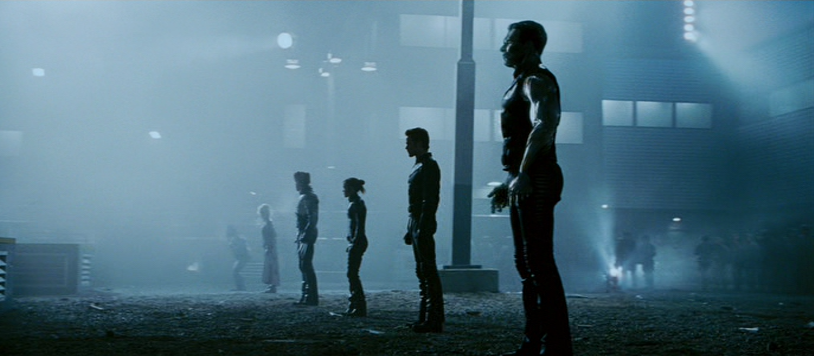
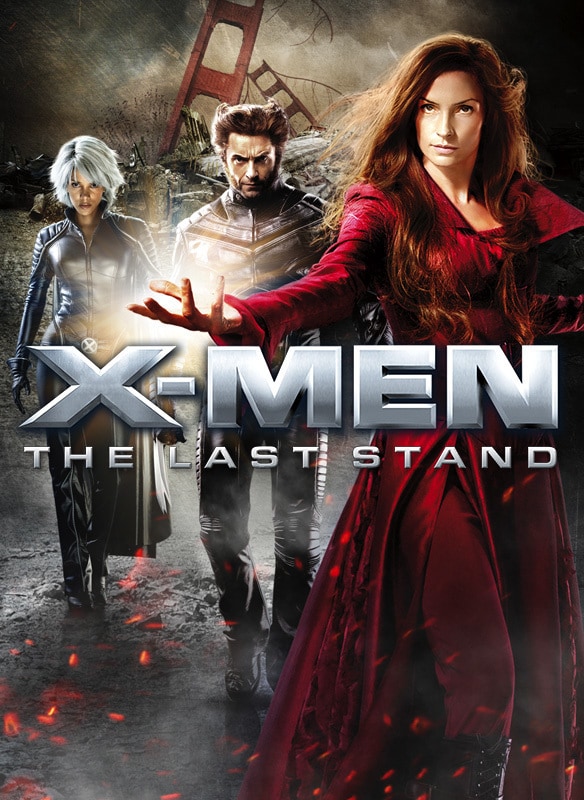
“Oh, my stars and garters.”
X-Men: The Last Stand is a confused movie, taking a huge step down in quality from the first two films in the X-Men series. After directing the first two entries, Bryan Singer decided to pack up shop and depart for greener pastures (eventually returning to the series in 2014 for Days of Future Past), heading over to Warner Bros. to helm Superman Returns. After a half dozen other directors passed on the film, Singer was replaced by Brett Ratner. Singer took X2 writers Michael Dougherty and Dan Harris along with him as well, and with so many new hands touching the material, the final film in the trilogy is mishandled pretty badly. Part of the problem is that Fox execs stuck their noses too far into the production of what was, at the time, the most expensive film ever made. Other issues stem from a mix of superficial fan service and clumsy writing. Despite its many flaws, it provides some impressive action sequences while batting about .500 on its attempts at emotional payoff. It’s understandable that as the series continues to add characters and subplots that it becomes harder to keep it all together, so while The Last Stand is not a fitting end to the trilogy, it at least manages to not be a total disaster.
The most praiseworthy element of The Last Stand is probably that it does not avoid the momentary upset of the death of important characters at expense of good storytelling. Too many films simply refuse to mar a 100% happy ending scenario by ensuring that the core characters all reach the closing credits in one piece. At the end of X2 we are not quite fooled into thinking that Jean Grey (Famke Janssen) is dead, so her return as Phoenix is not a surprise. But we are caught off guard when her rise from the dead results in the death of Cyclops (James Marsden). This can be partially explained away by Marsden’s decision to follow Singer to Superman Returns—a role that allowed him to show off his handsome face and have a more prominent role than the ensemble X-Men cast could allow. The deliberate decision to kill off Professor X (Patrick Stewart) is one that indicates these writers had some guts and weren’t afraid to get their hands dirty. While the evocative scene doesn’t feel particularly earned by the preceding narrative buildup (or lack thereof), it presents the audience with a haunting final image as Xavier turns his glance from Jean to Wolverine (whose eyes the audience is seeing the scene through) just before his body disintegrates under the crushing pressure of Jean’s telekinetic powers. And Magneto (Ian McKellen), Xavier’s longtime nemesis, cries out in anguish as his old friend perishes, revealing that he did not truly wish his destruction so much as his agreement. The scene is very affecting, but, for reasons I’ll describe later, only good when considered in a vacuum.
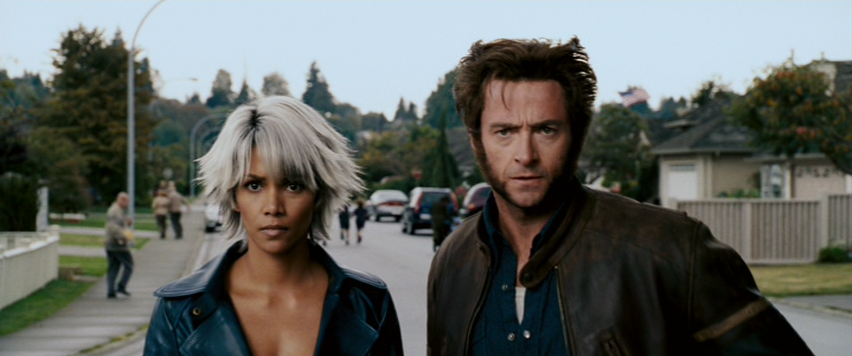
Charles Xavier did more for mutants than you will ever know. My single greatest regret is that he had to die for our dream to live.
Another strong element in The Last Stand is its central premise—the introduction of a cure for the mutant gene. This is a logical endpoint after the escalating tensions in the first two films, and it works by giving us shades of grey rather than black-and-white. Instead of fighting for their lives or for freedom from The Mutant Registration Act, the X-Men and their fellow mutants are presented with an opportunity to end the war entirely and live in peace—simply get the shot and become “normal.” This has the opportunity to provide some interesting interpersonal conflicts, as the characters view the cure differently. Storm is up in arms because the cure suggests that being a mutant is a disease; Magneto fears it will be administered against the will of mutants; Rogue thinks the cure is a blessing. Unfortunately, these discussions are replaced by dismissive one-liners, quickly pushing all of the mutants besides Rogue into defiant positions. While the cure narrative lacks nuance, it gives us the opportunity for some poignant moments. While the romantic subplots throughout the series have been fairly weak across the board, there is some weight behind Rogue’s decision to get the shot so that her inconvenient power—which is really more of a curse—no longer prevents her from touching Iceman (Shawn Ashmore). Similarly emotive is the scene in which Mystique (Rebecca Romijn) is shot with a dart containing the cure—her skin quickly changes from its characteristic bumpy blue to Romijn’s nude form. “Such a shame. She was so beautiful,” Magneto says, leaving her where she lays. It’s a pretty good send-off for a villain.
In other areas the film falters mightily. While Rogue and Mystique both lose their powers in scenes with very emotional overtones, Magneto loses his in the middle of the last battle. I can’t exactly put my finger on why it feels off—I think it’s partly because we’ve seen other characters lose their powers by that point, so it’s not jarring; partly its placement amidst the action scenes; but mostly because Magneto has been such an unstoppable character that he deserved a better demise. To make this worse, mid-production, Fox brass began considering that maybe a trilogy wasn’t the way to go, so we have an epilogue where Magneto regains his powers and a post-credits coda that reveals Xavier has transferred his mind into the body of a brain-dead man. Both of these moves undercut the gutsy moves to kill off Xavier and strip Magneto of his powers.
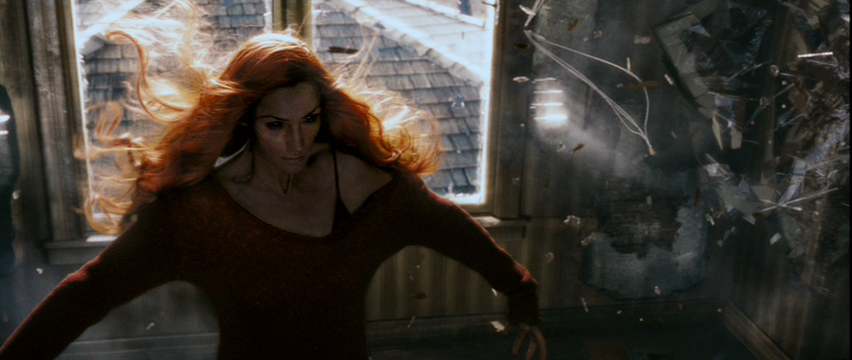
But what really plagues this film is its lack of attention to detail and hack writing, to the point that it basically feels like the writers assumed that audiences really wanted more CGI action scenes and additional characters instead of a logically consistent story. Characters demeanors change inexplicably and their choices seem wholly inappropriate until you realize most of them were made for narrative convenience, to corral the characters toward specific set pieces. For instance, while a main selling point of the film was that it would draw elements from The Dark Phoenix Saga —as promised by the ending of X2—the integration of that story with the cure narrative is pretty well bungled. Jean kills Cyclops and Professor X, but when she should be rising to power, instead she subjugates herself to Magneto, stands off to the side, and sulks until the climax. And that climax only happens after the climax of the cure narrative, and at that point feels tacked on.
The character of Professor X is also drastically altered. When Jean Grey rises as the Phoenix, and Professor X “feels” this anomalous occurrence at Alkali Lake, the formerly caring, noble mentor sends two of his most capable pupils there to confront Jean without telling them that she is probably unhinged and infinitely more powerful than he is and has the ability to turn them into dust with her mind.
The only moment that feels consistent with the character development from the previous films is Wolverine telling Jean that he loves her before he shoves his claws into her heart in the second climax. I mean, it’s totally dumb because there has been very little romantic development, it’s just kind of “a thing” that he is horny for her, and he has done nothing to warrant her affections—but at least he is consistent.
Angel (Ben Foster) is given one of the thinnest character arcs I’ve ever seen. He appears on screen for all of five minutes in order to show a mutant’s thoughts evolving from believing his powers are a curse, to accepting the need to be cured, to realizing that he is proud of who he is. The pre-credits cold open, where he is portrayed as a young boy by Cayden Boyd, hacking his wings off in the bathroom while his father pounds on the door, is a great setup, but the character is never worked into the plot at all and only serves to awkwardly echo the overarching theme of the film. In fact, many characters with unique abilities—Multiple Man, Callisto, Psylocke, Quill, Juggernaut, Arclight, Spike—basically make cameo appearances only for a gag scene or for a single use of their power. With very few exceptions, these characters serve no purpose other than to have a visually distinct fighting style. Those exceptions are Beast (Kelsey Grammer), a mutant politician who eventually must decide which side of the fight he’s on, and Kitty Pride (Ellen Page), who becomes involved with Iceman when he’s struggling with the whole not being able to touch Rogue thing. This feels like a huge whiff because the lack of Cyclops, Rogue, Professor X, Nightcrawler, and Jean Grey on the X-Men, plus the absence of Sabretooth, Toad, and Mystique for the Brotherhood leave a lot of holes to be filled.
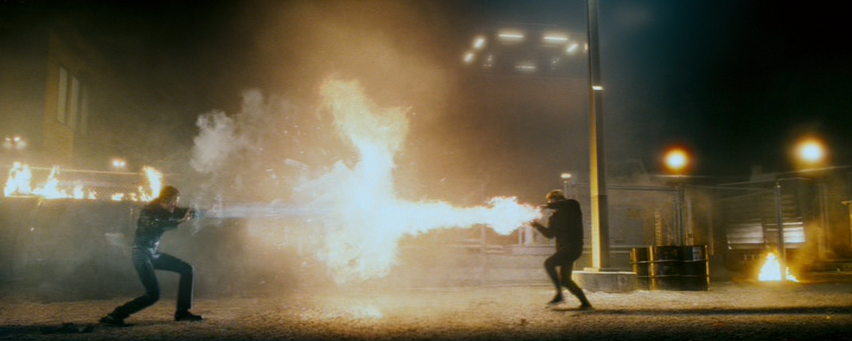
As a social commentary, The Last Stand is even more confused. The cure discussion basically morphs into the X-Men fighting to ensure that Magneto doesn’t destroy humanity in retaliation. But when so many outsider groups have identified with the X-Men based on their sexuality, race, religion, disability, it seems inconsiderate to play so fast and lose with the characters’ perceptions of it. I think the bones of a compelling story are there, they just totally ignore it in favor of fight scenes. It would have been nice to have something a little bit more nuanced than Rogue taking the cure, fundamentally altering a natural element of her being, to please a boy; or for the mutant X-Men who were adamantly opposed to the cure to not use it as a weapon against Magneto. But whatever, I could care less if it’s perfectly analogous to real world issues if the film is otherwise compelling.
From a zoomed out view, they did a decent amount of things right—pretty good message, some good commentary about why the government should be limited in power, some high profile character deaths… heck, I’ll even go as far as to say the CGI looks pretty good most of the time, especially when they are altering actors’ faces. But they simply do too much stupid stuff. Why is Magneto moving the Golden Gate Bridge, except because it looks cool to see the Golden Gate Bridge floating through the sky? Why is Pyro, who was a student at Xavier’s school in X2, the most senior, trusted member of Magneto’s Brotherhood? Why does it suddenly become night when the final battle starts? Why do Storm and Wolverine have to wander around in the fog at Alkali Lake for an extended period of time before Storm remembers she can control the weather? Dumb moments aside though, I’d argue that the film loses most of its points by committing two grave errors. First, by drastically changing the character Professor X such that his character is no longer the caring grandfather of the previous films, but a dangerous experimenter who deserves what he gets. Second, the Dark Phoenix storyline, which is considered one of the best arcs in comics history, ends up taking a backseat to the point that we really only get the character on screen. She is not fleshed out past an explanation that Professor X had messed around in her mind when she was a child, which differs from the comics and provides further evidence for my first point. It seems that this uncertain meshing of disparate storylines was mostly the fault of studio execs, who thought that sole focus on the Phoenix story would be too dark for a summer blockbuster, leaving us with an uneven product that doesn’t adequately convey either story.
X-Men: The Last Stand has many individually good scenes, but it never puts together a coherent enough story to earn those good moments. It’s easy to put much of the blame on the director and writers, but it seems that some pressure from studio execs regarding timelines and narrative decisions may have exacerbated things as well. It’s a mediocre film when you average together its good and bad elements.
Sources:
Curley, Michael. “How ‘X-Men: The Last Stand’ Nearly Destroyed the Comic Book Film Franchise”. PopMatters. 16 April 2018.
I love it when individuals come together and share thoughts.